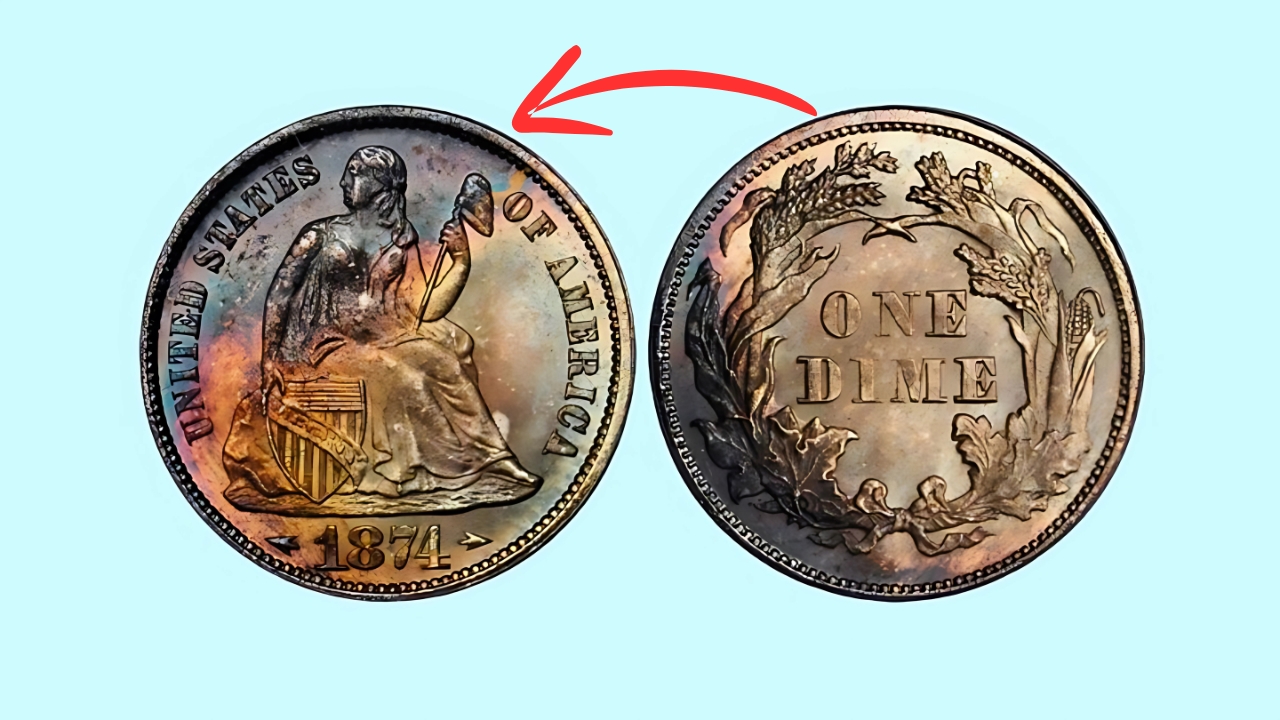Throughout American numismatic history, certain coins have emerged as extraordinary treasures, commanding remarkable prices in today’s market.
Understanding the current values of rare dimes and special quarters provides crucial insights for collectors and investors alike. This comprehensive analysis explores the most valuable dimes in American coinage, alongside a particular Bicentennial quarter that has captured significant attention in the marketplace.
Most Valuable American Dimes: Current Market Analysis
The 1894-S Barber Dime: A Seven-Figure Treasure
The 1894-S Barber Dime stands as the ultimate prize in American dime collecting. With only nine confirmed surviving specimens from an original mintage of 24 pieces, this coin represents the pinnacle of numismatic rarity. Recent market transactions have established remarkable precedents:
Most recent auction achievement: $1.9 million Perfect specimen estimated value: Above $2.5 million Circulated specimen value range: $750,000 to $1.2 million
The 1916-D Mercury Dime: A Classic Rarity
The 1916-D Mercury Dime maintains strong market presence with consistent value appreciation:
Mint State 65 grade: $125,000 to $150,000 Mint State 60-64 grade: $35,000 to $85,000 Extremely Fine condition: $12,000 to $18,000 Good to Very Good condition: $4,500 to $7,500
The 1873-CC No Arrows Seated Liberty Dime
This Carson City masterpiece demonstrates remarkable market strength:
Mint State specimens: $175,000 to $225,000 About Uncirculated: $85,000 to $125,000 Very Fine to Extremely Fine: $45,000 to $75,000 Good to Very Good: $20,000 to $35,000
The 1798/7 Draped Bust Dime
Current market valuations reflect its historical significance:
Mint State examples: $85,000 to $150,000 About Uncirculated: $45,000 to $75,000 Very Fine: $22,000 to $35,000 Fine condition: $12,000 to $18,000
The 1921-D Mercury Dime
Market values demonstrate strong collector demand:
Mint State 65 Full Bands: $35,000 to $45,000 Mint State 63-64: $15,000 to $25,000 Extremely Fine: $5,000 to $7,500 Very Fine: $2,500 to $4,000
The 1809 Capped Bust Dime
Contemporary market values reflect historical importance:
Mint State 63 or better: $45,000 to $75,000 About Uncirculated: $22,000 to $35,000 Very Fine: $8,000 to $12,000 Fine: $3,500 to $6,000
The 1874-CC Arrows Seated Liberty Dime
Current market positions demonstrate steady appreciation:
Mint State: $65,000 to $95,000 About Uncirculated: $35,000 to $55,000 Very Fine: $15,000 to $25,000 Fine: $8,000 to $12,000
The 1797 16 Stars Draped Bust Dime
Market values reflect its early American heritage:
About Uncirculated: $85,000 to $125,000 Very Fine: $35,000 to $55,000 Fine: $18,000 to $28,000 Very Good: $8,000 to $15,000
The 1919-D Mercury Dime
Full Split Bands examples command premium prices:
MS-65 Full Bands: $45,000 to $65,000 MS-63/64 Full Bands: $22,000 to $35,000 About Uncirculated: $8,000 to $12,000 Extremely Fine: $2,500 to $4,500
The 1860-O Seated Liberty Dime
Pre-Civil War positioning influences current values:
Mint State: $25,000 to $45,000 About Uncirculated: $12,000 to $18,000 Very Fine: $4,500 to $7,500 Fine: $2,000 to $3,500
The Valuable 1976 Bicentennial Quarter Double Die Reverse
This notable error variety maintains strong market presence:
MS-67 or better: $8,500 to $12,500 MS-65/66: $3,500 to $6,500 MS-63/64: $1,500 to $2,500 About Uncirculated: $500 to $1,000 Extremely Fine: $200 to $400
Market Dynamics and Investment Considerations
Current Market Trends
The rare dime market demonstrates several noteworthy characteristics: Strong Appreciation: Premium-quality specimens consistently show value increases exceeding 8-12% annually.
Condition Sensitivity: Mint State examples command exponentially higher prices than circulated specimens, with particularly strong premiums for pristine preservation.
Rarity-Driven Valuation: Population reports significantly influence market positions, with fewer known examples correlating to stronger price appreciation.
Investment Considerations
When evaluating these coins for investment purposes, several factors warrant attention: Authentication Requirements: Professional certification through PCGS or NGC remains essential for value preservation and market liquidity.
Condition Parameters: Understanding grade-specific value variations provides crucial guidance for acquisition decisions.
Market Timing: Historical price data indicates optimal holding periods typically exceed five years for maximum appreciation potential.
Future Value Projections
Analysis of current market trends suggests continued strong performance: Heritage Rarity: The finite supply of these historical pieces ensures sustained collector interest.
Investment Diversification: Growing recognition of numismatic assets as portfolio diversification tools supports value appreciation.
International Interest: Expanding global collector base contributes to price strength across all condition ranges.
Acquisition Strategies
Successful acquisition approaches incorporate several key elements: Thorough Authentication: Verify certification authenticity through grading service websites.
Condition Analysis: Carefully evaluate surface preservation, strike quality, and eye appeal.
Market Research: Review recent auction results and dealer transactions to confirm fair market values.
Documentation: Maintain comprehensive records of provenance and certification history.
Market Access Points
Various channels provide access to these valuable coins: Major Auction Houses: Heritage Auctions, Stack’s Bowers, and other prestigious firms regularly offer premium specimens.
Specialized Dealers: Established numismatic professionals maintain inventories of investment-quality examples.
Private Treaty Sales: Confidential transactions facilitate acquisition of the rarest specimens.
Rare Dimes and a Rare Bicentennial Quarter
The market for rare American dimes and significant error quarters demonstrates remarkable strength and stability. Understanding current values provides essential guidance for collectors and investors navigating this sophisticated market segment.
As appreciation continues and available specimens become increasingly scarce, these numismatic treasures represent both historical significance and investment opportunity. Careful attention to authentication, condition, and market timing remains crucial for successful participation in this dynamic marketplace.
